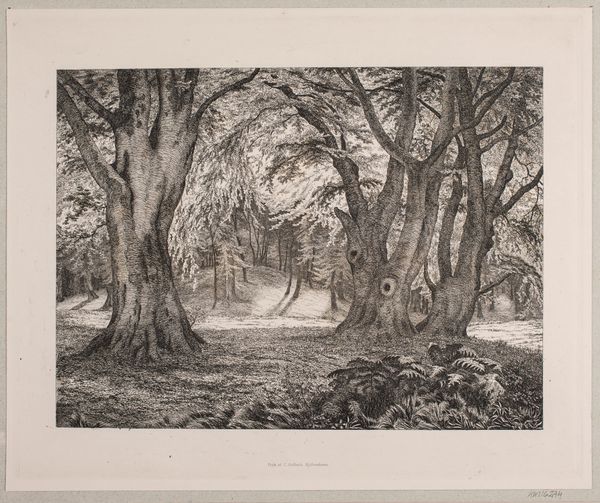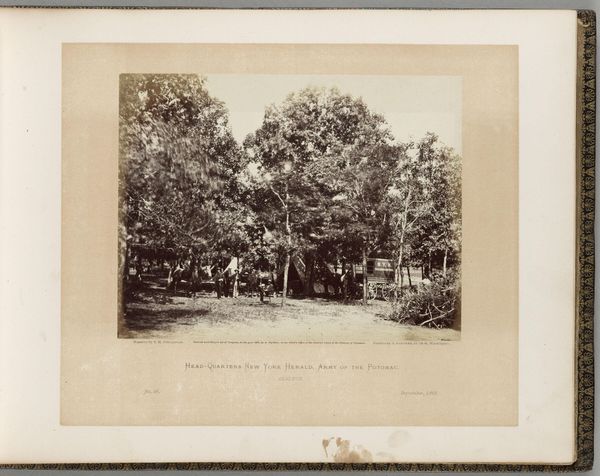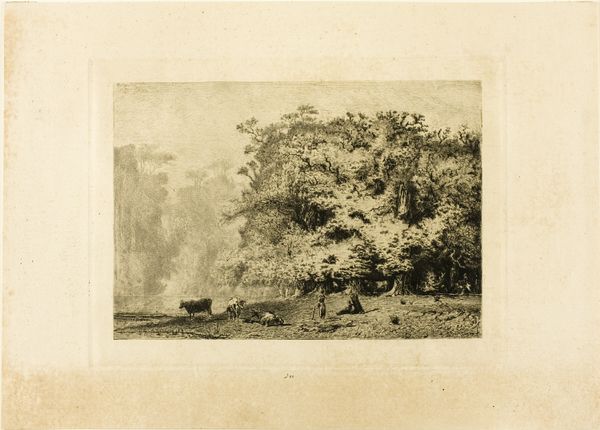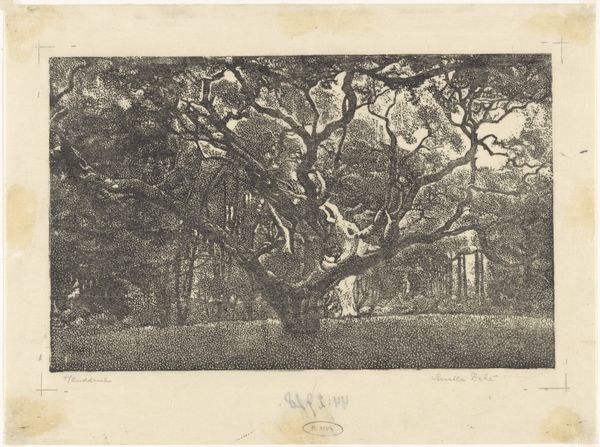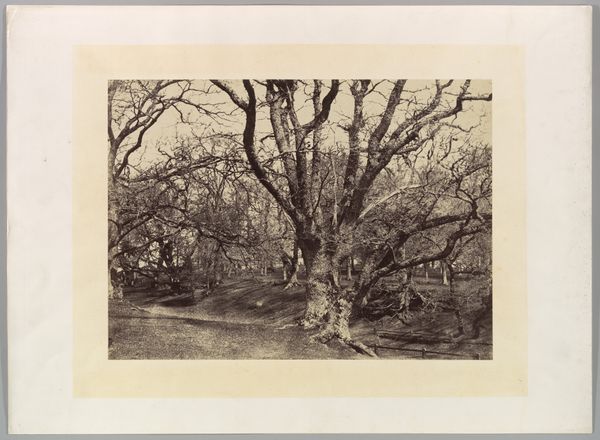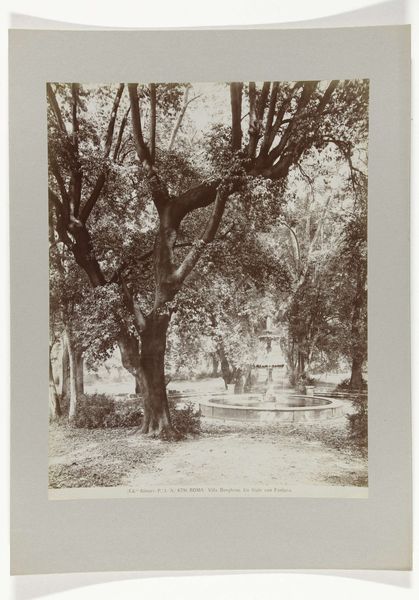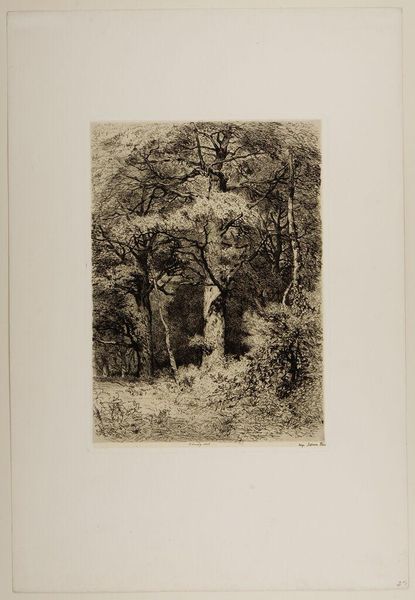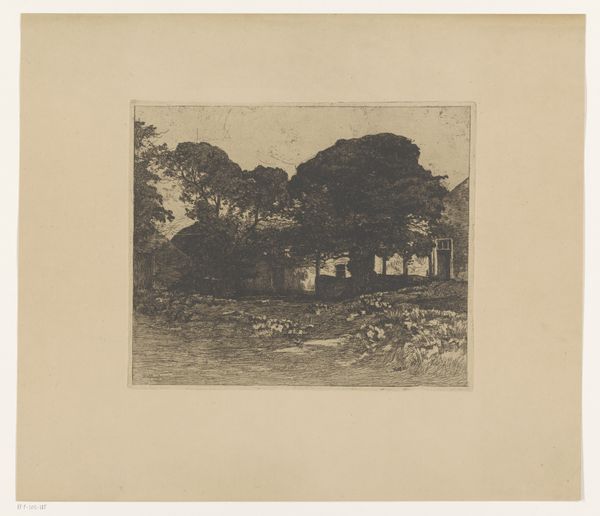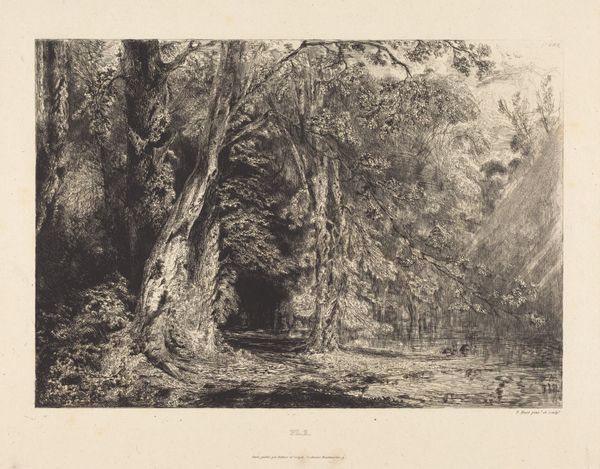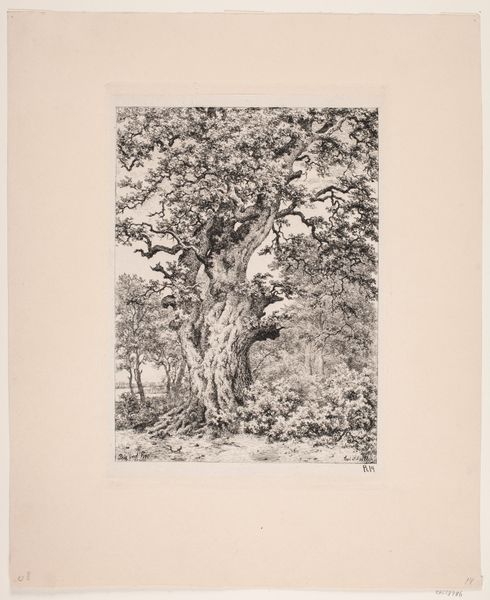
photography, albumen-print
#
tree
#
16_19th-century
#
landscape
#
photography
#
albumen-print
Dimensions: height 198 mm, width 241 mm, height 319 mm, width 406 mm
Copyright: Rijks Museum: Open Domain
Editor: This albumen print, “Gomboom in de Plantentuin van paleis Buitenzorg,” made sometime between 1870 and 1908 by Woodbury & Page, really captures a sense of grandeur in this Javanese botanical garden. The sheer size and the sprawling roots are mesmerizing. What catches your eye in this work? Curator: The fascinating thing to me is how this photograph functions as both a scientific record and a colonial artifact. Albumen printing was a resource-intensive process, requiring skilled labor to produce the paper and expose the image. The “gomboom,” or banyan tree, itself is not just a botanical specimen, but a raw material and commodity. What does its monumental scale suggest to you? Editor: I suppose the scale emphasizes the exoticism of the location for a Western audience. Was photography used to justify colonial activities? Curator: Precisely. These images, circulated in Europe, promoted a romantic vision of the East, simultaneously encouraging resource extraction and trade. The labor required for both the botanical garden’s upkeep and the creation of these prints themselves highlights a complex dynamic of exploitation and representation. What about the composition stands out to you, in relation to this? Editor: I see. The roots, almost clawing out of the frame, give the impression of something both impressive and maybe a bit menacing in their grasp, symbolizing the colonial ambition to control resources. Curator: Exactly. This photograph isn’t just a depiction of nature; it's evidence of a specific system of production, labor, and control during a specific historical moment. Considering the chemical processes involved in albumen printing, it quite literally represents the extraction of resources for both botanical study and cultural consumption. Editor: I hadn't considered all of those layers. Seeing the labor involved definitely changes how I view it. Thanks! Curator: My pleasure! It's amazing to look beyond the immediate subject matter and to unpack the economic and social context that shapes the work.
Comments
No comments
Be the first to comment and join the conversation on the ultimate creative platform.

